Formally announced in IFA 2018, the new range of ZenBooks wowed critics and consumers with their powerful internals packed in a diminutive chassis. Today, we’ll be taking a look at one of the smaller offerings in the current ZenBook range: the ASUS ZenBook 13 UX333FN.

| CPU | Intel Core i5-8265U |
| OS | Windows 10 Home |
| GPU | NVIDIA GeForce MX150 2GB |
| RAM | 8GB, 2133MHz, LPDDR3 |
| Display | 13.3-inch IPS, 1920 x 1080, 16:9, NanoEdge, 100% sRGB, 95% screen-to-body ratio, Anti-Glare Coating |
| Storage | 512GB PCIe 3.0 x2 SSD |
| I/O Ports | 1x USB 3.1 Gen2 Type-C, 1x USB 3.1 Gen2 Type-A, 1x USB 2.0 Type-A, 1x HDMI, 1x MicroSD Card Reader, 3.5mm audio jack |
| Connection | Dual-Band 802.11ac WiFi, Bluetooth 5.0 |
| Weight | 1.09kg |
| Dimensions | 16.9 x 302 x 189mm (HWD) |
| Battery | 50Wh 3-Cell Lithium-Polymer, 65W Power Adapter |
| Colors | Royal Blue, Icicle Silver |
| Others | NumberPad, Backlit Keyboard, Harman Kardon-certified Audio, 3D IR HD Camera |
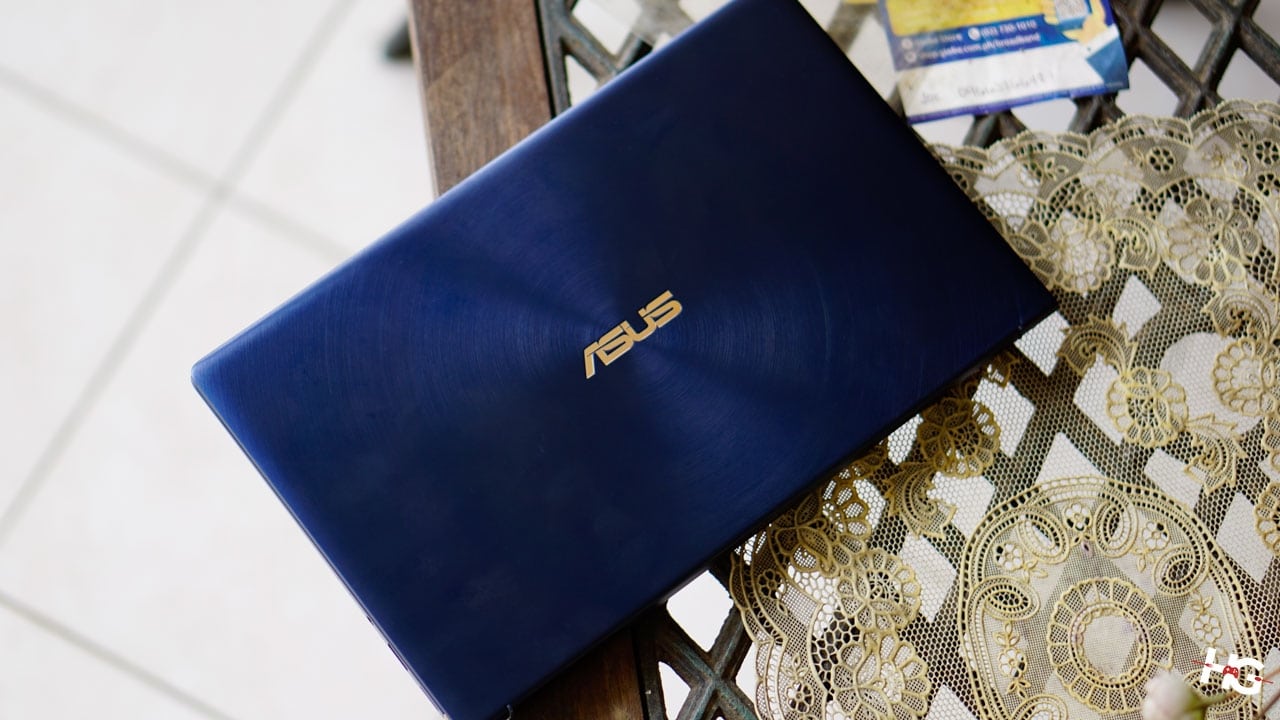
The ASUS ZenBook 13 UX333FN has a couple of party pieces to impress users. The first of which is its dainty chassis. Measuring at just 16.9 x 302 x 189mm (HWC), the device is arguably one of the most compact notebook in the market.
Its diminutive size also allows the notebook to have a lightweight construction. The whole device only weighs around 1.09kg making it one of the lightest notebooks in the current ZenBook range. This is especially helpful if you’re tired in lugging around heavyweight machines just to do work outside.
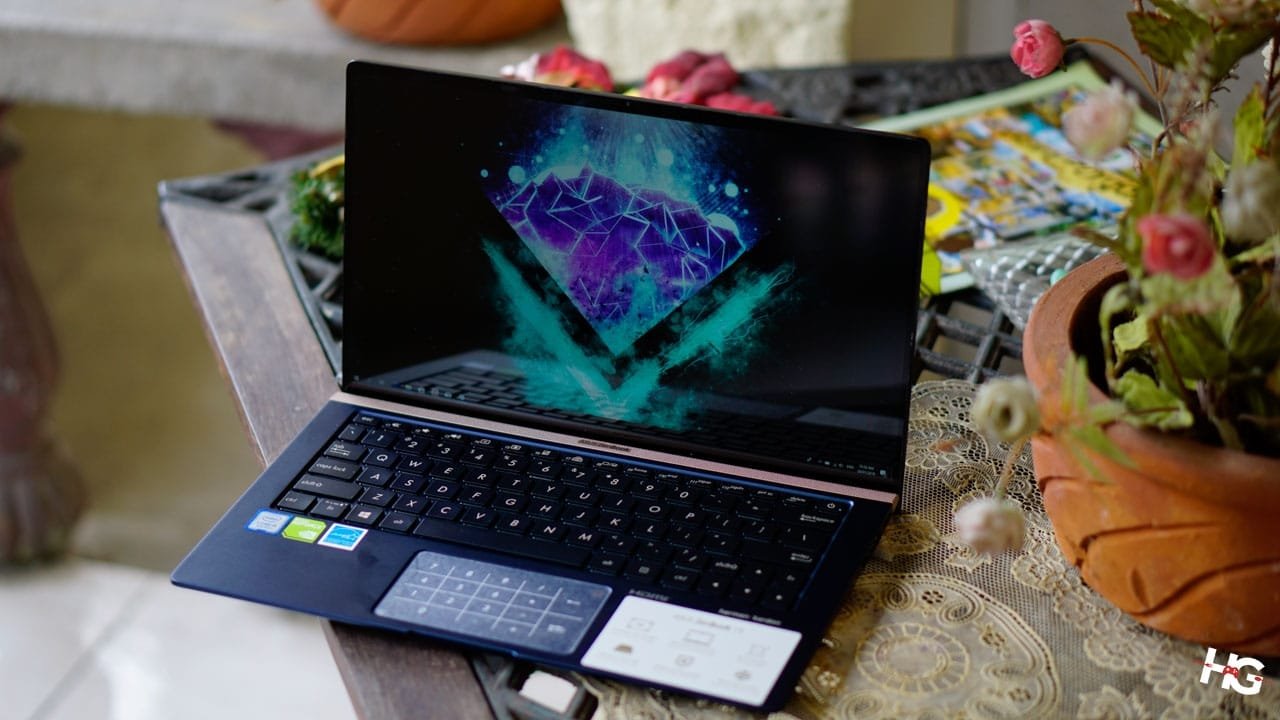
Another impressive feat done by ASUS on this notebook is fitting in a 13.3-inch screen in a body of a 12-inch notebook. The ASUS ZenBook 13 UX333FN comes with a 13.3-inch IPS display with a 1920 x 1080 resolution and comes with Anti-Glare coating.
There won’t be any issues in viewing angles thanks to the IPS screen. ASUS is also promising 100% sRGB color gamut on the device’s display. With the addition of the Anti-Glare coating, we were able to work outside in indirect sunlight without much hindrance.

Based on our experience, colors are well-saturated without being too offensive on the eyes. This also allowed us to work on more color-intensive labor such as editing photos and videos that stayed true to the colors of the content.

The bezels on the display are fairly thin only measuring 2.8mm at the sides. Despite shaving off the bezels, ASUS was still able to fit in a 3D IR HD Camera at the top of the display. This means that making video calls on the notebook will look more natural instead of looking directly down at the camera.
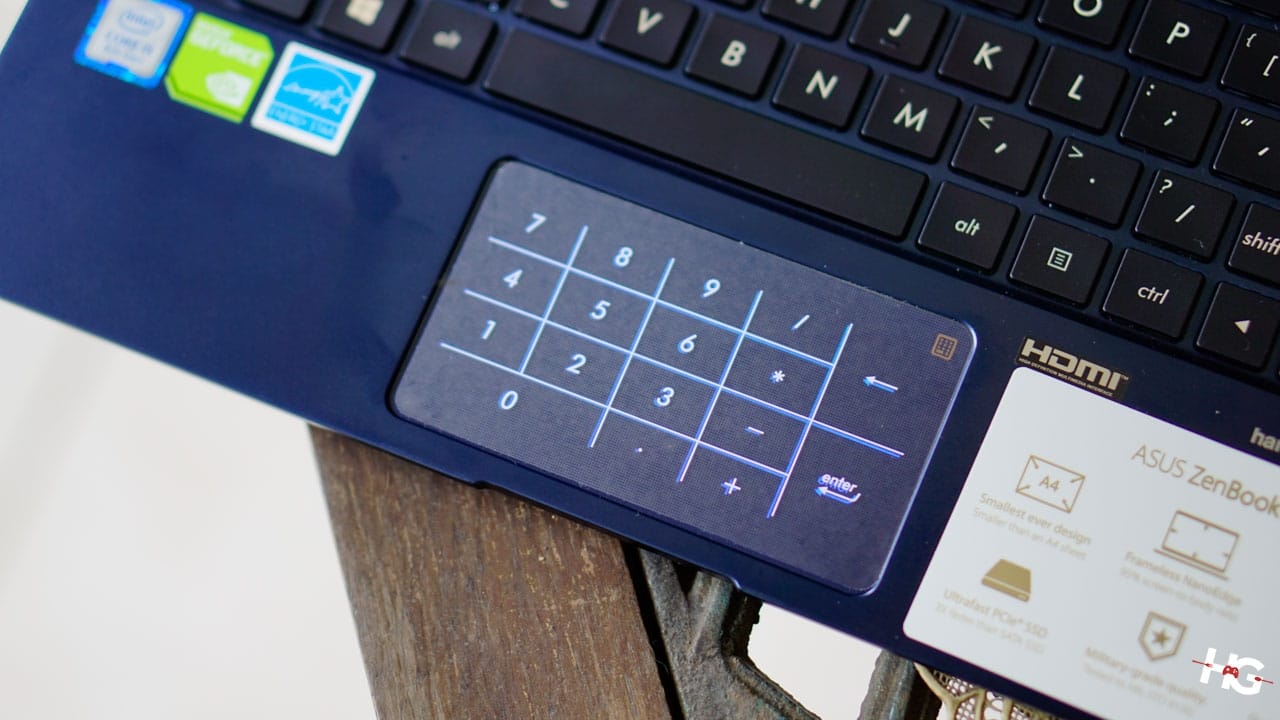
Another party piece on the latest range of ZenBooks is the NumberPad. Integrated on the touchpad is a full-sized number pad complete with numbers and legends. Think of it as a budget version of the ScreenPad found on the ZenBook Pro 15 UX580.
Activating the NumberPad is as easy as tapping the number pad icon at the top-right corner of the touch pad. The software is intelligent enough to reject key presses when on the NumberPad when using the touchpad for its intended purpose. ASUS have put faint legends for the NumberPad, which were felt while gliding our finger on the touchpad.

Another minor gripe that we had on the NumberPad is that the legends and the backlight are not completely lined up with each other. It’s something that most users probably won’t notice and might have been a minor defect in manufacturing.

The keyboard on the ASUS ZenBook 13 UX333FN is a standard 60% keyboard with white backlight. The backlight is strong enough to be noticed in bright areas. The backlighting can also be turned down by pressing Fn + F7 to switch from 4 different brightness settings (one of which is off).
At the lowest setting, the keyboard backlight will be bright enough to fully illuminate the legends on the keycaps without blinding the user when glancing down at the keyboard.
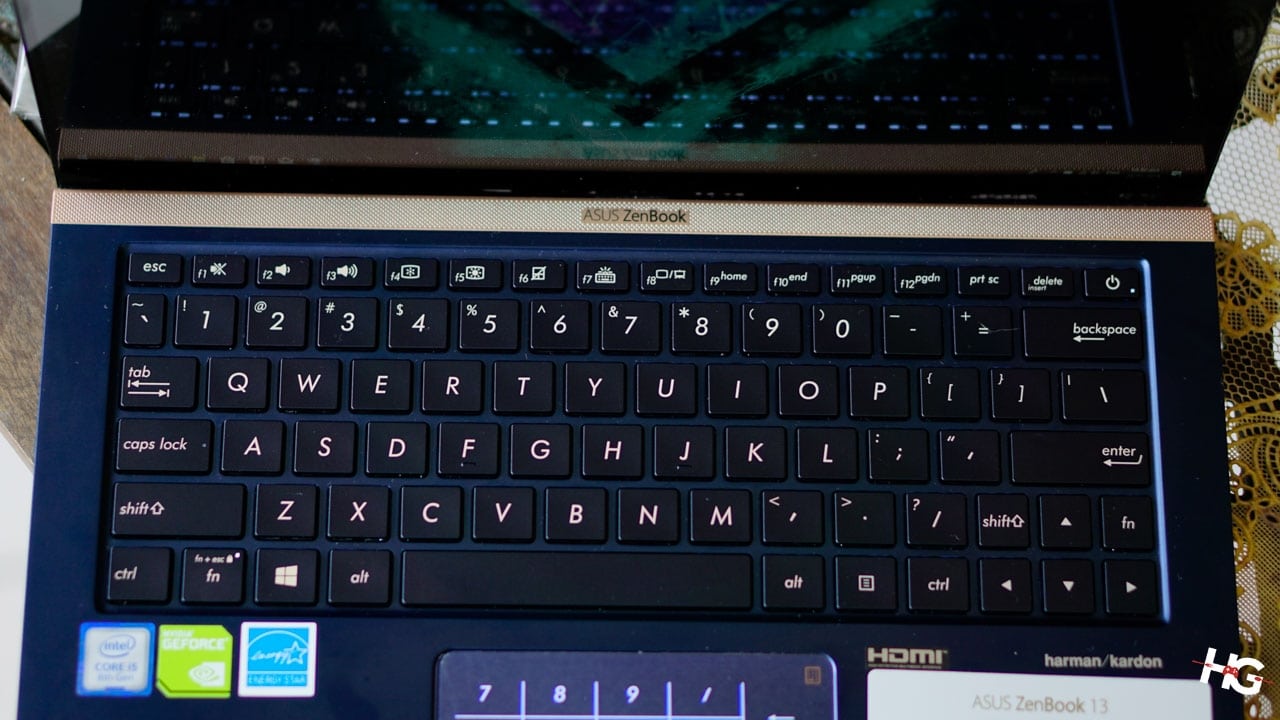
Due to the size of the device, ASUS had to slice the length of some of the keys. This is a standard practice at the right-hand side of the keyboard. The left-hand keys such as Tab, Caps Lock, and Shift has also been cut off a bit.
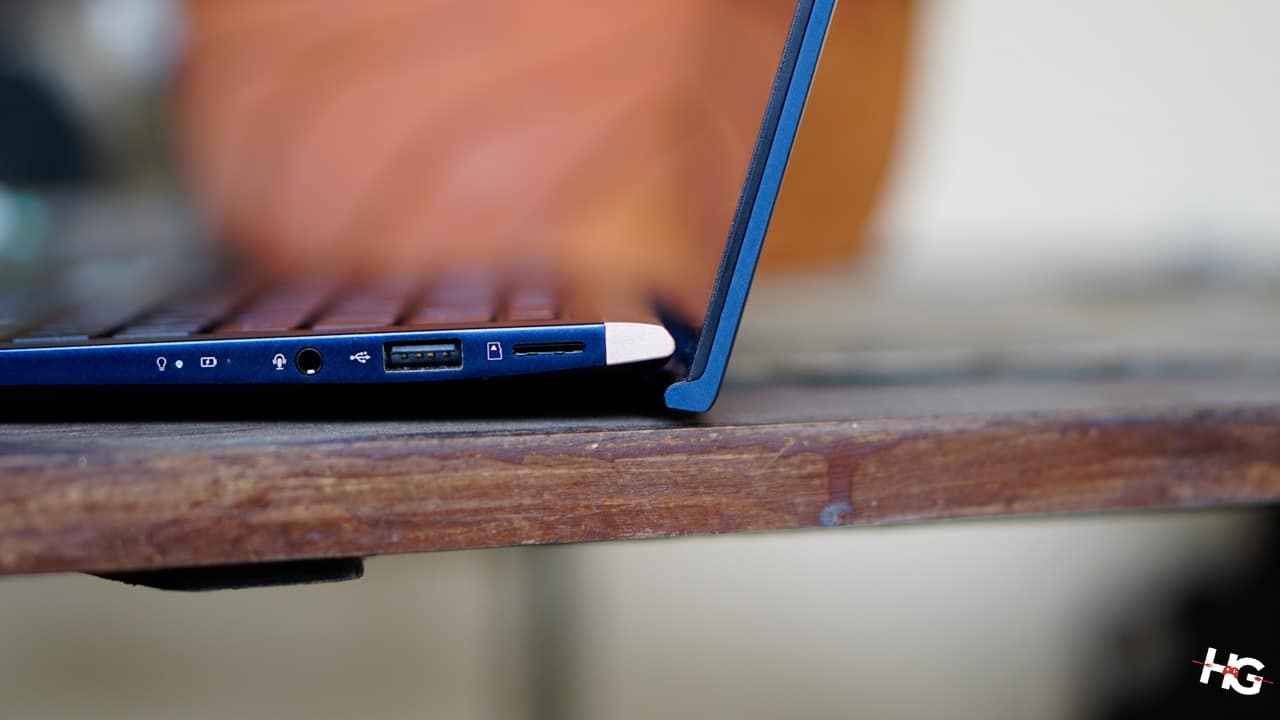
Thanks to ASUS’ ErgoLift Hinge, the typing experience on the device become much more bearable despite the learning curve. The ErgoLift Hinge raises the keyboard to a more natural typing angle when the display lid is opened.
This was the same issue we had with the keyboard of the MSI GF63 8RD. This will be most noticeable if you’re used to a full-sized keyboard. It will take some time to completely adapt to the smaller footprint of the UX333FN’s keyboard.
A major gripe that we had with the keyboard of the device is the placement of the power button. Located just above backspace and beside the delete button, this layout of the power button is just a disaster waiting to happen.
Given that the backspace and delete buttons are keys often used, it would have been better if ASUS placed the power button somewhere near the I/O ports.

Speaking of the I/O ports, the ASUS ZenBook 13 UX333FN comes with the usual battery of I/O ports that you would expect from an ultrabook.
At the right-hand side of the device are its DC Input, a full-sized HDMI port, a USB 3.1 Gen2 Type-A port, and a USB 3.1 Gen2 Type-C port. Unfortunately, the Type-C port isn’t Thunderbolt 3 capable.
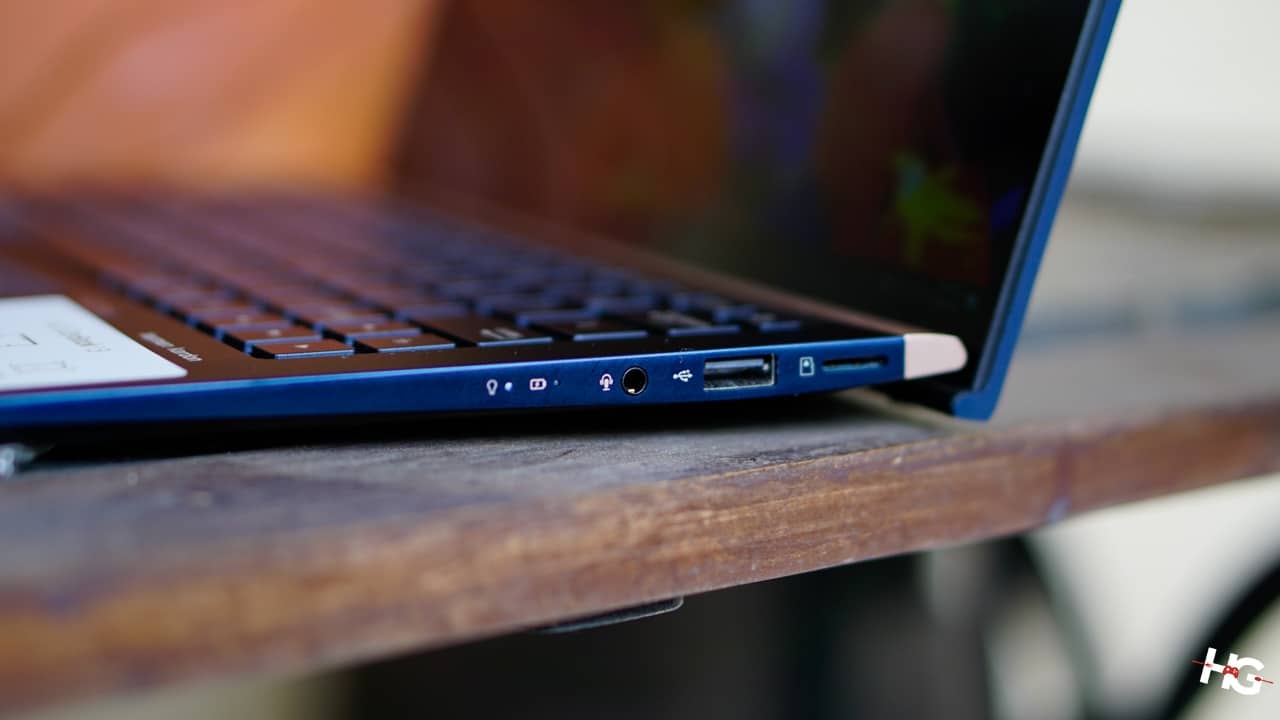
The left-hand side isn’t as impressive but important nonetheless. It’s populated by a single USB 2.0 Type-A port, a MicroSD card slot, a 3.5mm audio jack, and charging and HDD lights.
Inside the ASUS ZenBook 13 UX333FN is an Intel Core i5-8265U. As another refresh of Intel’s 14nm lithography process, the processor is basically a refresh of Intel’s 8th generation of processors, Coffee Lake.
Being designated as a U-series processor with only a TDP of 15W, the Intel Core i5-8265U on the notebook is still expected to pack a paunch. To help with performance and storage, ASUS has also thrown in 8GB of 2133MHz LPDDR3 RAM, an NVIDIA GeForce MX150 2GB GPU, and a 512GB PCIe 3.0 x2 SSD.
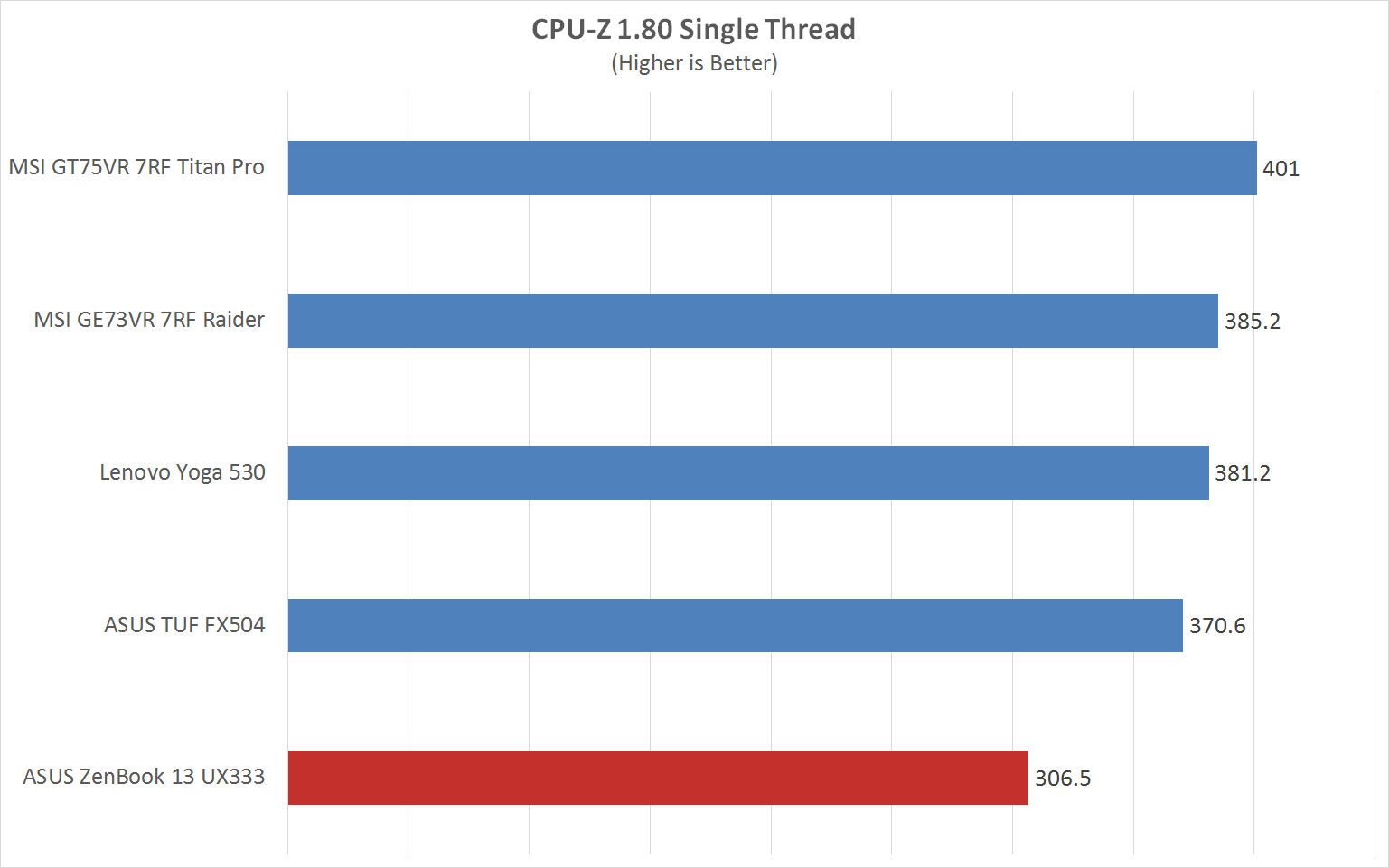

“CPU-Z is a freeware that gathers information on some of the main devices of your system such as processor name and number, codename, process package, cache levels, mainboard and chipset, as well as memory type, size, timings, and module specifications. It also offers real time measurement of each core’s internal frequency and memory frequency.”
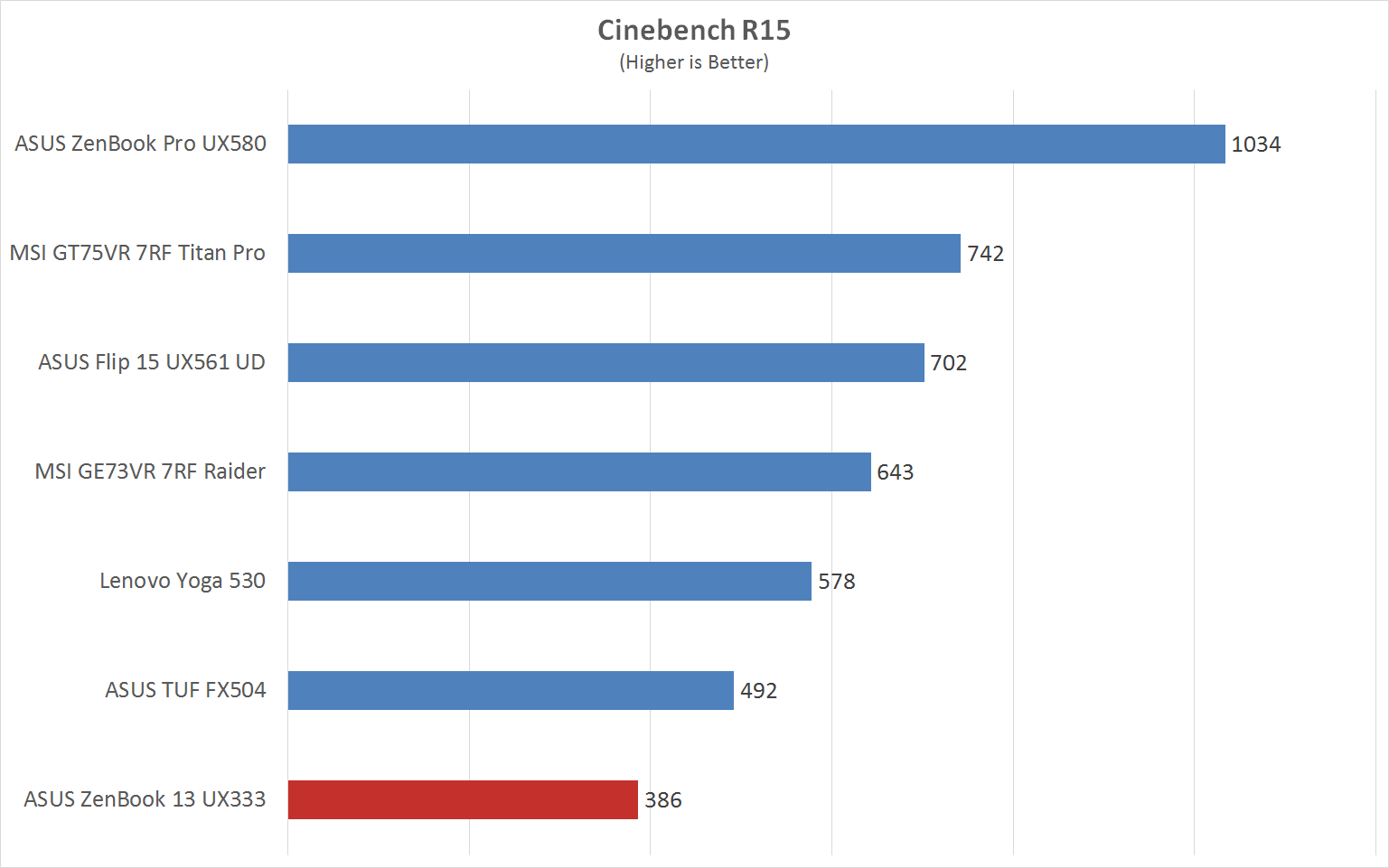
“Cinebench R15 CPU test scenario uses all of your system’s processing power to render a photorealistic 3D scene. This scene makes use of various algorithms to stress all available processor cores. In fact, CINEBENCH can measure systems with up to 256 processor threads.This test scene contains approximately 2,000 objects which in turn contain more than 300,000 polygons in total, and uses sharp and blurred reflections, area lights, shadows, procedural shaders, antialiasing, and much more. The result is displayed in points (pts). The higher the number, the faster your processor.”
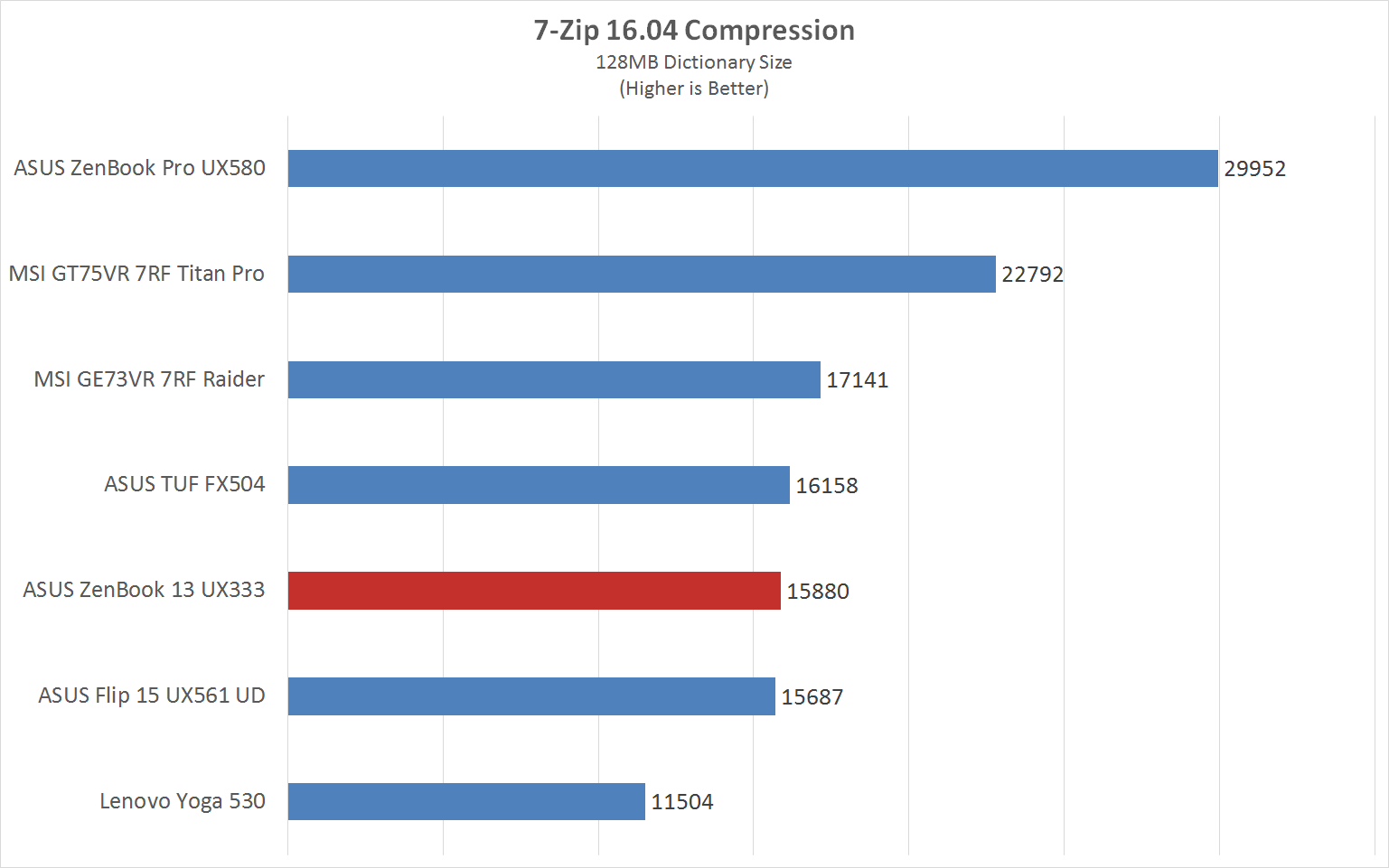
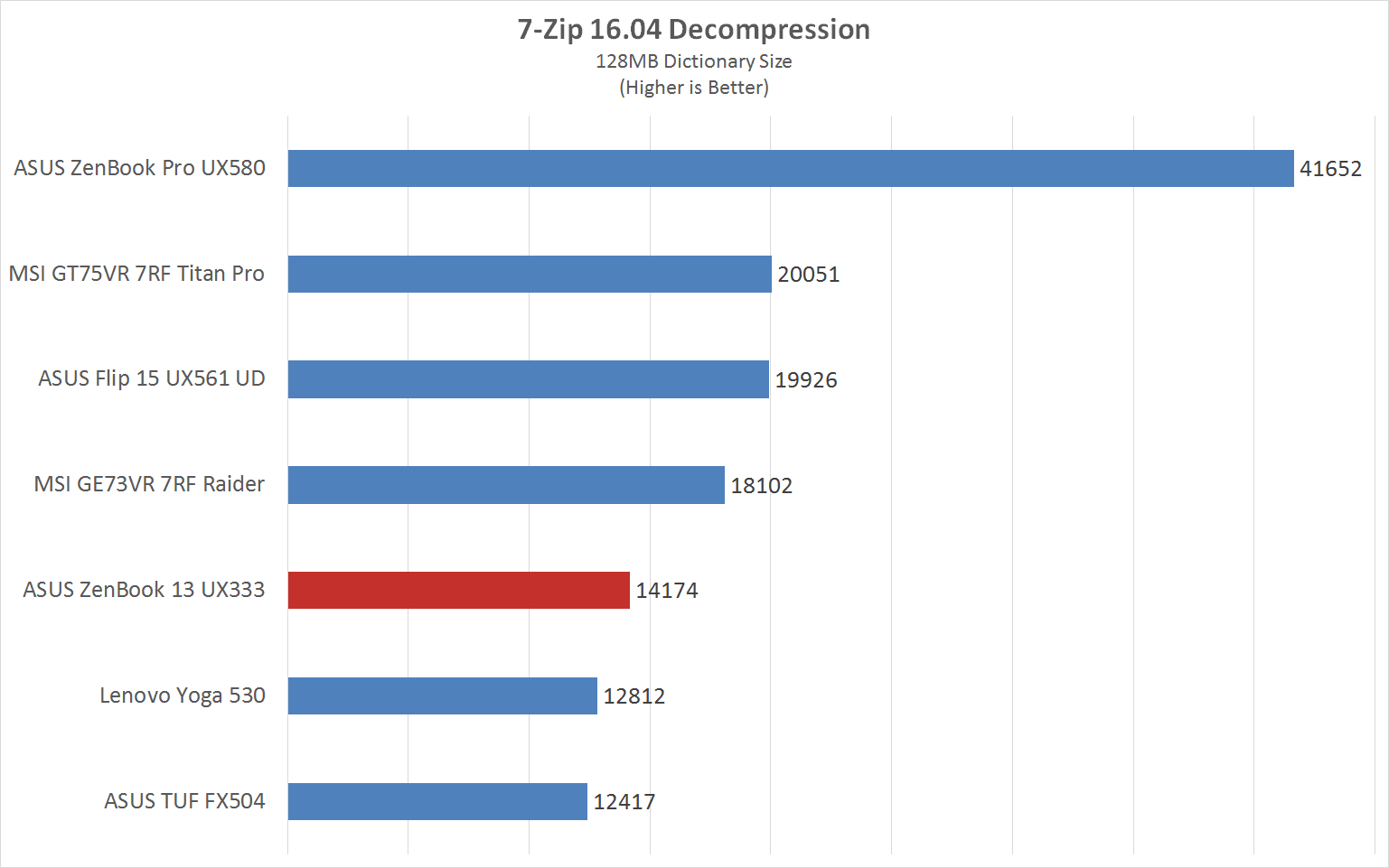
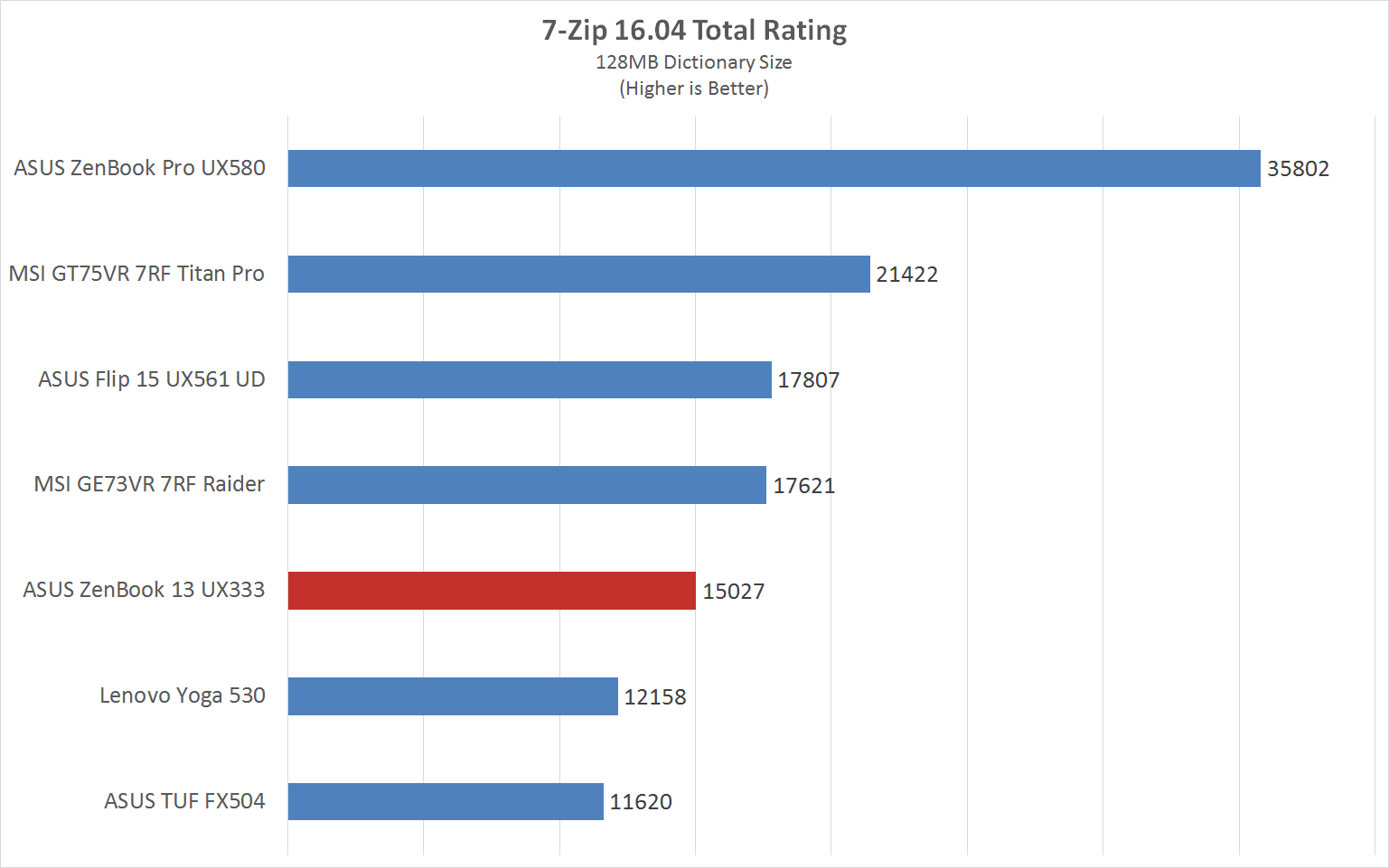
“7-Zip is a file archiver with a high compression ratio for ZIP and GZIP formats, which is between 2 to 10% better than its peers, depending on the exact data tested. And 7-Zip boosts its very own 7z archive format that also offers a significantly higher compression ratio than its peers—up to 40% higher.”
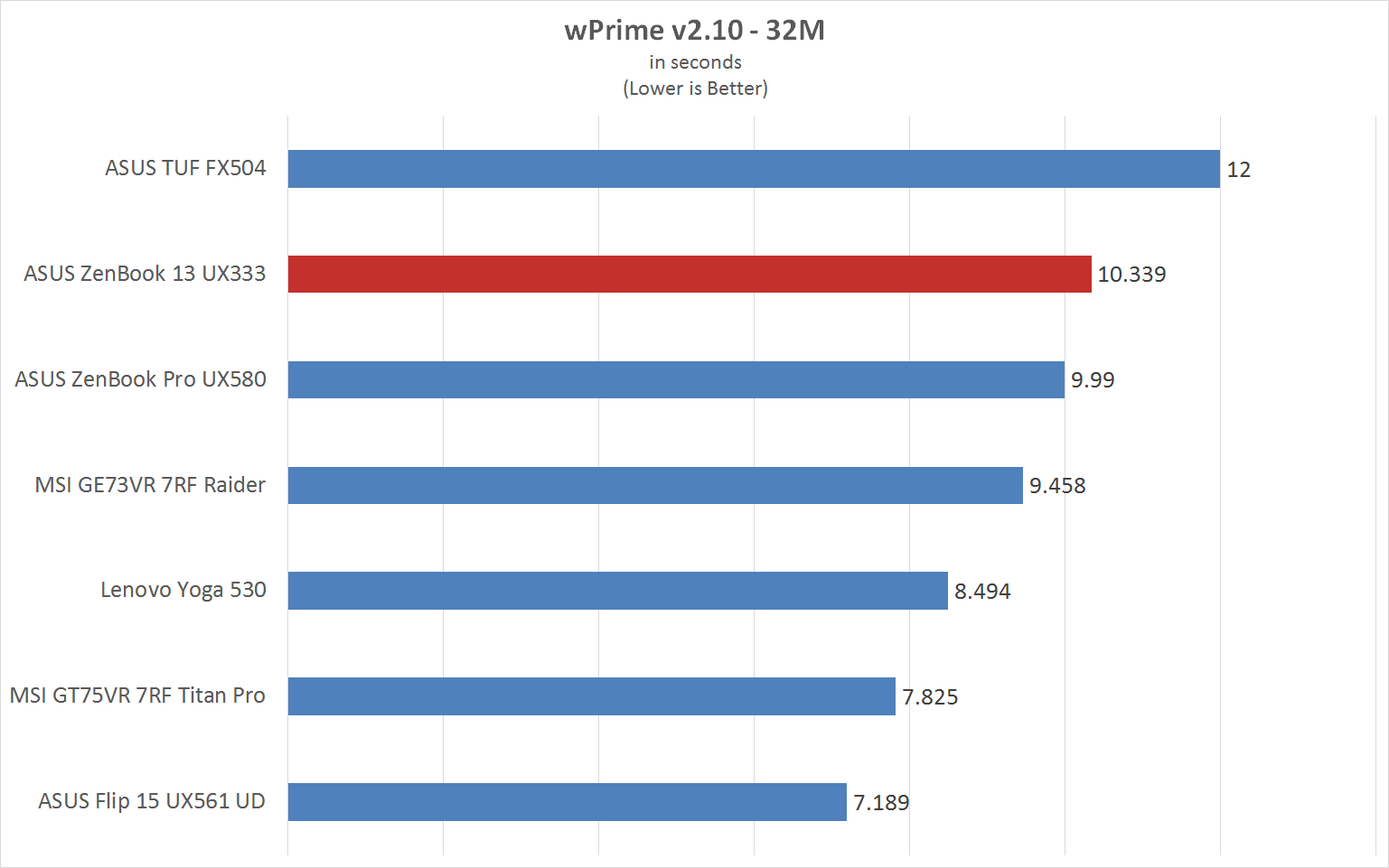

“wPrime is a leading multithreaded benchmark for x86 processors that tests your processor performance by calculating square roots with a recursive call of Newton’s method for estimating functions, with f(x)=x2-k, where k is the number we’re sqrting, until Sgn(f(x)/f'(x)) does not equal that of the previous iteration, starting with an estimation of k/2. It then uses an iterative calling of the estimation method a set amount of times to increase the accuracy of the results. It then confirms that n(k)2=k to ensure the calculation was correct. It repeats this for all numbers from 1 to the requested maximum.”
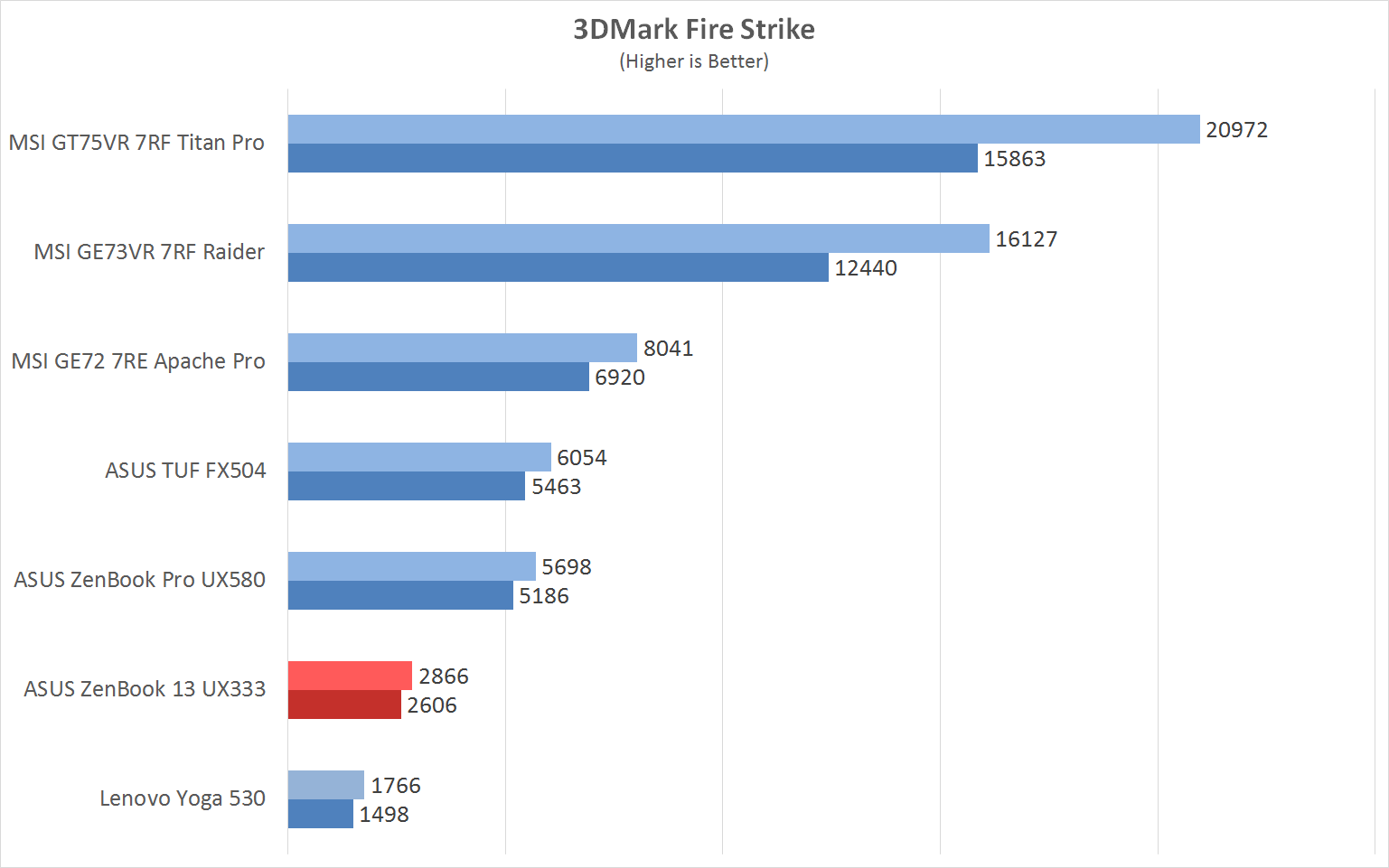
“Designed to showcase the DirectX 11 API, the Futuremark 3DMark Firestrike became a standard in benchmarking as it not only tests the capabilities of the GPU, but also the capabilities of the whole system for a complete stress test.”
Placing somewhere in the middle of the pack in most benchmarks, the ASUS ZenBook 13 UX33FN was able to keep up in most scenarios. Keep in mind that the UX333FN is one of the smallest notebooks yet in our library of benchmarks.
As for gaming, you probably won’t run any Triple AAA games with the ASUS ZenBook 13 UX333FN. The NVIDIA GeForce MX150 wasn’t designed to be a powerhouse unlike NVIDIA’s GTX series. You can play a few games with it if you’re comfortable in fairly low framerates or lowered resolution and graphical details.

Due to its size, the ASUS ZenBook 13 UX333FN cannot output heat fast enough in order for the processor to continually peak its clock speeds. Despite this, the device was still able to keep its cool without going overboard in the thermals department.
Powering the ASUS ZenBook 13 UX333FN is a 50Wh 3-cell Lithium-Polymer battery. Under the right conditions, the battery should last you around 6 hours of medium use.
Under light use such as word processing, the battery will last for more than 9 hours given that you’re not straying too far from the lowest brightness settings of the display and the keyboard backlight.
The battery is charged via a DC-in port at the right-hand side of the device. Using its included 65W barrel charger, the device can be charged from 0 to 100% in just around 2 hours.
In a pinch, you could also use the Type-C port on the notebook to charge it given that you have a power bank that supports 45W charging.
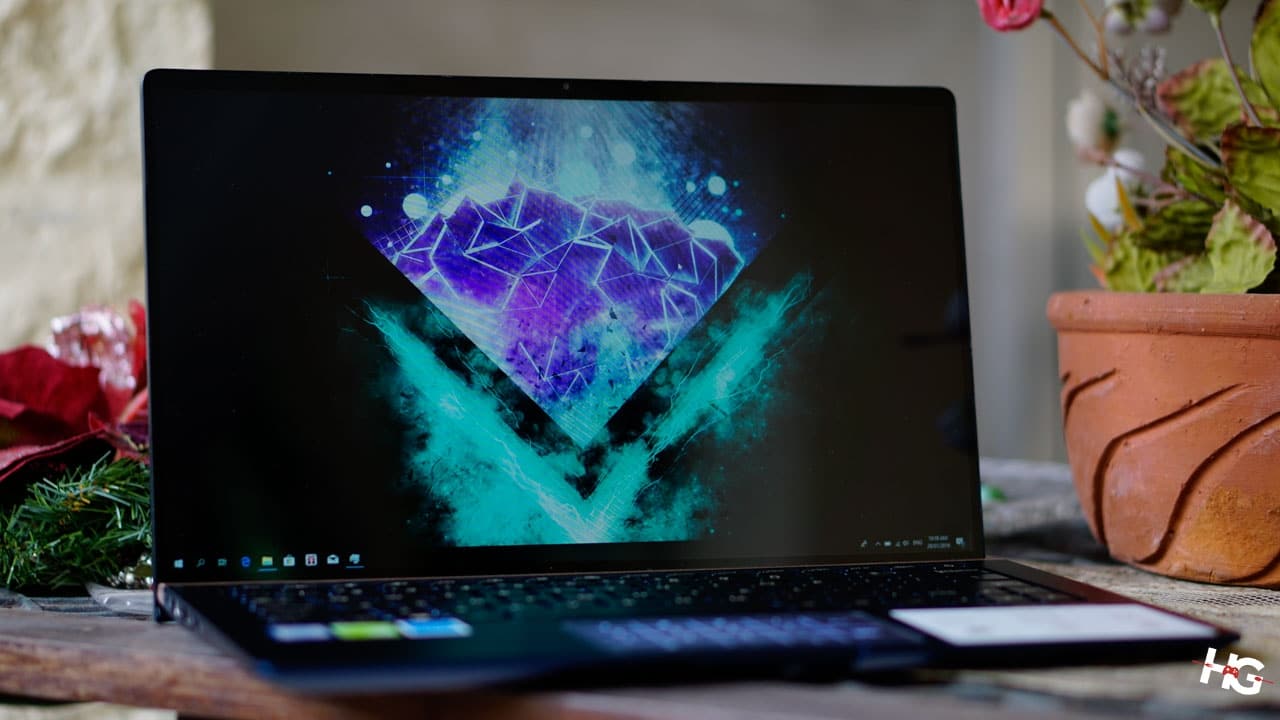
Priced at PhP 66,995, the main draw of the ASUS ZenBook 13 UX333FN is its miniature size. The device has been designed to take up the least space and weight as possible while still delivering decent performance and battery.
Aside from a few hiccups such as the keyboard layout and misaligned legends on the NumberPad, the ASUS ZenBook 13 UX333FN achieves what it sets out to do: a minimal tradeoff between size and performance.
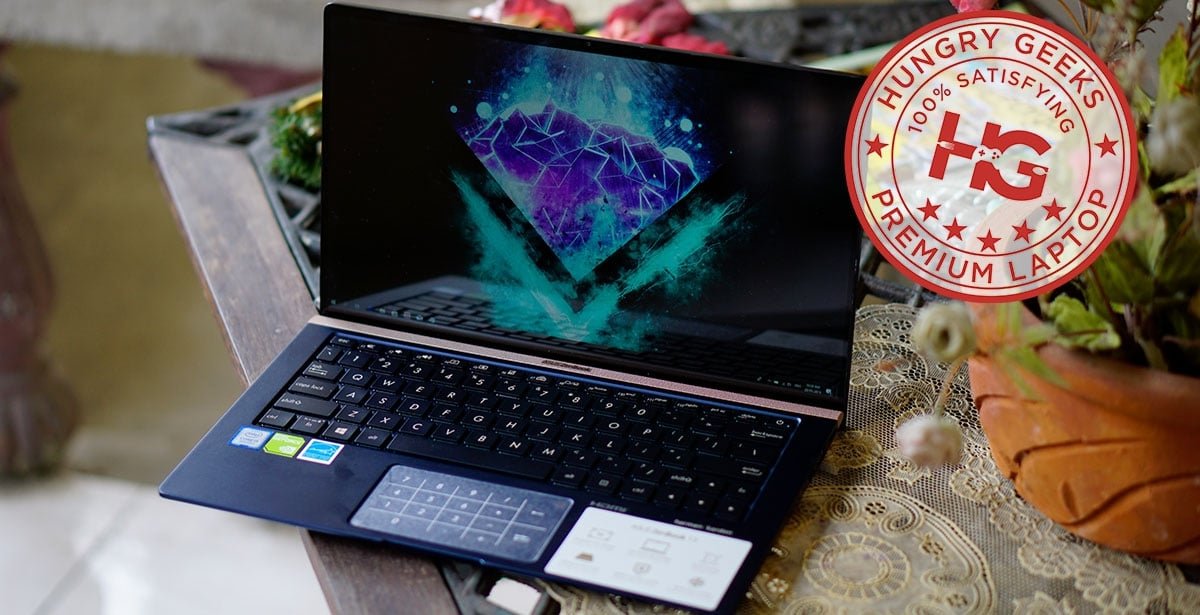
We believe that the ASUS ZenBook 13 UX333FN, and by extension the rest of the new ZenBook series, embodies everything that an ultrabook should do: a lightweight experience and considerable performance. This is why we’re giving the ASUS ZenBook 13 UX333FN our 100% Satisfying Premium Notebook award.
If you’re looking a notebook that will offer substantial performance without breaking your back and your wallet, then the ASUS ZenBook 13 UX333FN should be just right up your alley.
